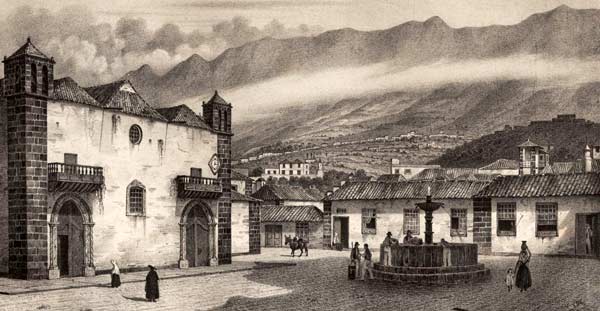Puerto de la Cruz (Port Orotava)
“Port Orotava is a place of considerable trade, and has flourished greatly since the destruction of the harbour of Garrachica: it contains some good private buildings, two churches, two convents of Friars, and two of Nuns. At each end of the town is a black sandy bay; along the northernmost is a low stone wall, built to prevent an enemy from landing: at the other bay is a small fort or castle, for the same purpose; and between them, at the landing-place, a battery of few cannon. But the surf that continually breaks upon the shore is a better defence that if it were garrisoned by ten thousand of the best troops.

[…] No boat will go from hence to a ship in the offing until she approaches within a mile of the shore, when the practique-boat puts a pilot on board, who brings her into the road, which is about a mile to the westward of the town, where shipping lie moored in forty or fifty fathom water. This is a good port in the summer-season, or from the beginning of May to the end of October; but in the winter, ships are often obliged to slip their cables their cables and put to sea, for fear of being surprised by a northwest wind, which throws in a heavy sea upon this coast. But these winds rarely happen, and commonly give warning beforehand, so that ships have time to get away. The pilot that boards a ship on her arrival remains there until she departs. These pilots are very careful to slip and put to sea, when they apprehend any danger. It is commonly calm in this road; but there is almost always a long northerly swell, that causes ships to roll very much, so that one would be apt to imagine it almost impossible to load a cargo there.”
George Glas, 1764






